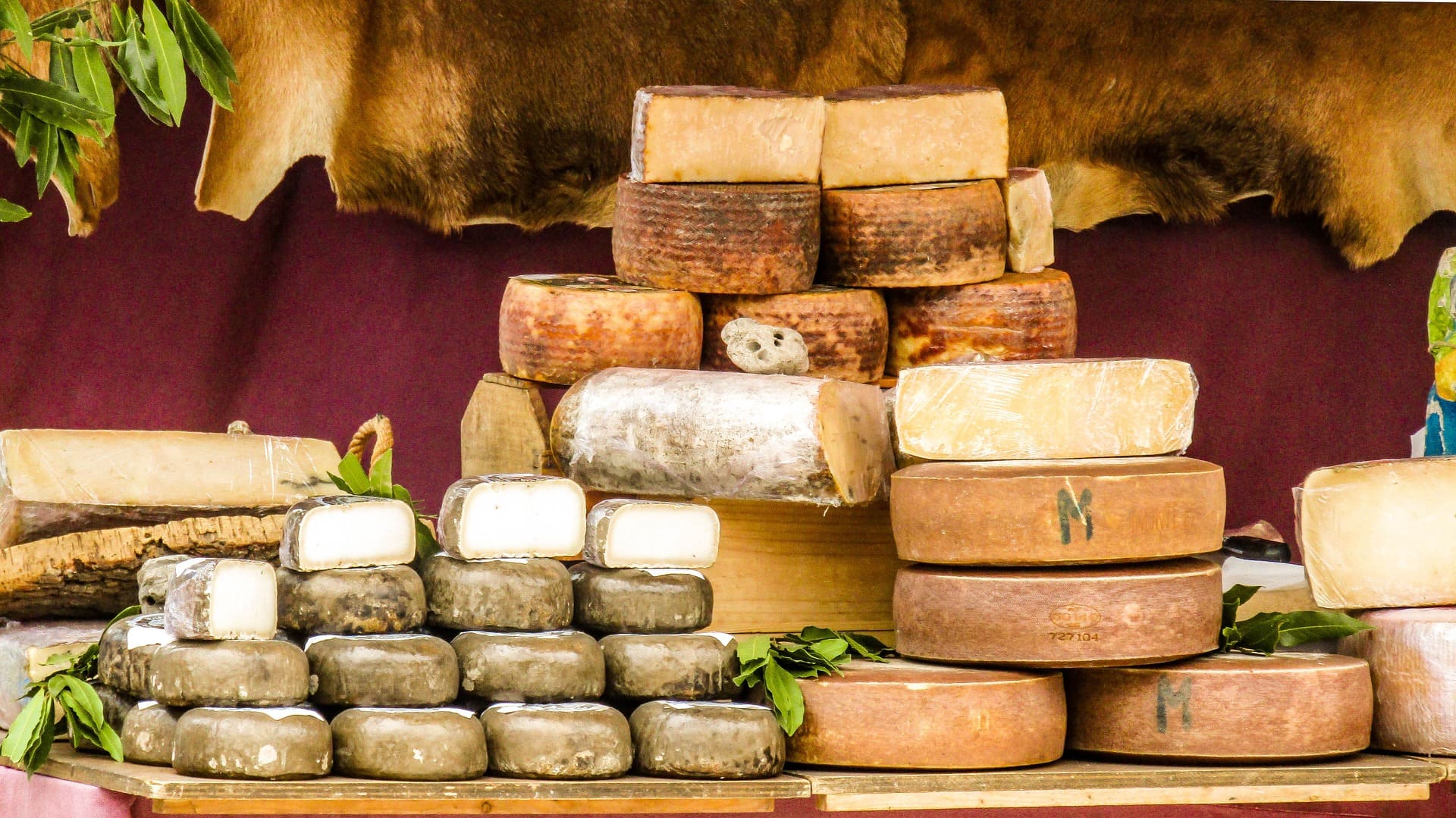Spain and Portugal boast world renown gastronomy including great cheeses, some found in tapas or sold in the various open-air markets. With evidence of production dating back to prehistoric times, cheese has been produced on the Iberian Peninsula throughout the ages. Cheese has a complex history, just as that of the Peninsula. The variety of cheeses throughout Spain and Portugal are plenty with the diverse regions, landscapes, and climates. Portugal and Spain have a number of DOP, Denomination of Protected Origin, cheese regions as well along with other local products like saffron. Get to know a bit of the cheese varietals to sample on your next trip.
In Spain, you’ll undoubtedly want to try at least one of the following cheeses depending on where you’re traveling. Try them all and more if you can!
- Manchego: Originating in La Mancha, manchego is one of the most well-known Spanish cheeses worldwide. Each has its own particular mix of cow & sheep milk, as well as level of curing.
- Cabrales: This strong bleu cheese comes from the northern region of Asturias where it has been historically aged in the caves of Los Picos de Europa. It contains a mixture of cow’s, sheep’s, and goat’s milk.
- Idiazábal: One of Spain’s most famous cheeses comes from the Basque Country and has a rich, smoky flavor stemming from sheep’s milk.
- Tetilla: Cultivated in Galicia’s La Coruña, Tetilla comes from cow’s milk. This creamy cheese has a unique shape.
- Mahón: From the Balearic island of Menorca, Mahón is a dense cheese with a salty flavor that is best eaten naturally with black pepper and olive oil.


When traveling in Portugal, you’ll find even more local, unique cheeses to try.
- Azeitão: Similar to Queijo (cheese in Portuguese) da Serra da Estrella, this strong creamy cheese comes from the Setúbal Peninsula.
- Nisa: This semi-hard sheep’s milk cheese comes from the Alentejo region.
- Rabaçal: A combination of sheep’s and goat’s milk forms this semi-hard white cheese. Try Rabaçal when in Coimbra.
- São Jorge: This cheese can have a wide variety of flavors depending on aging. Queijo da São Jorge comes from the Azores Islands and with its strong flavor, pairs well with a hearty red wine.
The cheeses of the Iberian Peninsula go far beyond this list. Most can be found in tapas form or pair well with the perfect Spanish or Portuguese wine. If you’d really like to learn more about local cheeses, reach out to your Customer Service Manager to include a cheese experience in your itinerary.

